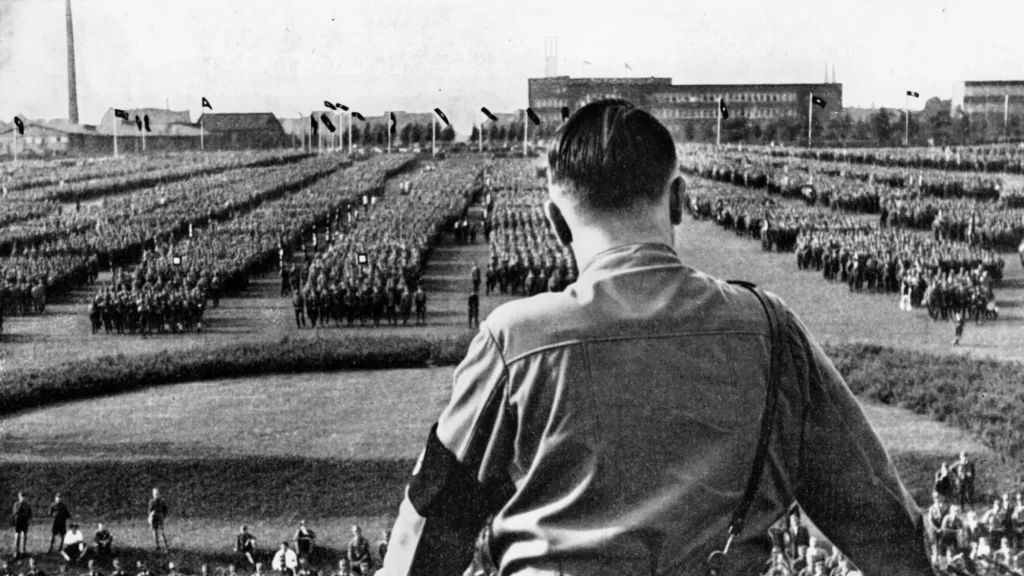Table of Contents
Understanding why Adolf Hitler and the Nazi Party targeted Jewish people is crucial for recognizing how hatred can be manipulated for political gain. The historical factors behind Nazi antisemitism are complex, rooted in centuries of prejudice, personal experiences, political opportunism, and pseudoscientific theories.
By studying these factors, we can better understand the causes of the Holocaust and prevent such atrocities in the future.
Why Did Hitler Target Jewish People? 5 Historical Factors
Here are 5 Reasons behind Hitler targeting Jewish People,
Early Life Influences and Personal Experiences
Adolf Hitler’s antisemitism began forming during his youth in Austria. Living in Vienna between 1907 and 1913, Hitler was exposed to a city rife with antisemitic ideas. Politicians like Karl Lueger promoted anti-Jewish policies, which left a lasting impact on Hitler’s worldview.
Additionally, during his time in poverty, Hitler blamed Jewish people for his failures, which laid the foundation for his later ideological stance.
Germany’s Post-World War I Crisis
After Germany’s defeat in World War I, the country was left in chaos. Many Germans couldn’t accept their loss and believed in the “stab-in-the-back” myth, which falsely blamed Jewish people for the defeat. The country’s economic collapse and hyperinflation further exacerbated these feelings.
As people lost jobs and savings, Hitler provided a scapegoat: Jewish people. This narrative was central to his rise to power, capitalizing on the political instability of the Weimar Republic.
Exploitation of Existing European Antisemitism
Hitler didn’t create antisemitism in Europe; rather, he exploited deep-rooted prejudices that had existed for centuries. Religious antisemitism was widespread in Christian Europe, and Jews were often blamed for societal problems.
Additionally, economic antisemitism painted Jews as responsible for financial instability, and social isolation made it easier for people to believe harmful stereotypes. Hitler capitalized on these long-standing beliefs to rally support for his policies.
Political Strategy and Power-Seeking
Antisemitism served as a political tool for Hitler. By targeting Jewish people, Hitler unified different segments of German society under a common enemy. It provided a way to distract from real political and economic issues. Hitler’s rhetoric appealed to various groups—economic concerns, religious prejudice, and nationalist sentiments—further consolidating his power.
The enemy became a tool for uniting a fractured nation under Nazi rule.
Pseudoscientific Racial Theories
Hitler adopted and promoted pseudoscientific racial theories that were popular in the early 1900s. He twisted the ideas of social Darwinism to justify discrimination, claiming that different races were in a struggle for survival, with the “Aryan” race being superior.
Eugenics theories, which had support in various countries, also contributed to his justification for persecution. These discredited ideas helped fuel the extreme and systematic nature of Nazi antisemitism.
The Importance of Historical Understanding
Studying the factors that led to Nazi antisemitism serves several important purposes:
- Prevention through Education: By understanding how hatred develops and spreads, we can recognize and counter similar patterns in society today.
- Honoring Victims’ Memory: Learning about the Holocaust ensures that the six million Jewish victims are remembered and their suffering is not forgotten.
- Recognizing Warning Signs: The factors that led to Nazi antisemitism, such as economic crisis, political instability, and scapegoating, can reappear in any society. Understanding these signs helps us stay vigilant against similar risks today.
Lessons for Today’s World
The study of Nazi antisemitism offers valuable lessons for modern society:
- Critical Thinking Skills: We must question simple explanations for complex problems and remain skeptical of conspiracy theories that blame entire groups of people.
- Importance of Democratic Institutions: Strong democratic systems and the rule of law are essential to protect minorities from persecution.
- Speaking Out Against Hatred: Silence in the face of hatred can lead to dire consequences. People must speak out when they see discrimination and prejudice.
- Education and Understanding: By learning about different cultures and religions, we can break down stereotypes and reduce ignorance that fuels hatred.
Final Words
The reasons behind Hitler’s targeting of Jewish people are rooted in a complex mix of personal prejudice, political strategy, and exploitation of long-standing European antisemitism.
These factors, combined with pseudoscientific theories, led to the tragic events of the Holocaust. While understanding this history cannot erase the pain of the past, it can help prevent such horrors from happening again.
By studying the factors behind Nazi antisemitism, we honor the memory of the victims and ensure that future generations understand the dangers of unchecked hatred.
The lessons we learn today will guide us in creating a world where such ideologies have no place, and where the rights and dignity of all people are protected.
People Also Ask
Was Hitler’s antisemitism unique in European history?
No, antisemitism had existed in Europe for centuries. However, Hitler’s version was more systematic and deadly, combining religious, economic, and modern political techniques.
Did all Germans support Hitler’s antisemitic policies?
No, many Germans opposed Nazi antisemitism but remained silent due to fear. Some actively resisted by helping Jewish people escape or hide.
How did Nazi propaganda spread antisemitic ideas?
The Nazis used newspapers, radio, films, and posters to spread antisemitic messages. They relied on emotional, simple propaganda to influence the public.
Could the Holocaust have been prevented?
Historians debate this. A stronger international response, more robust democratic institutions, and more people speaking out against hatred could have altered the course of events.






